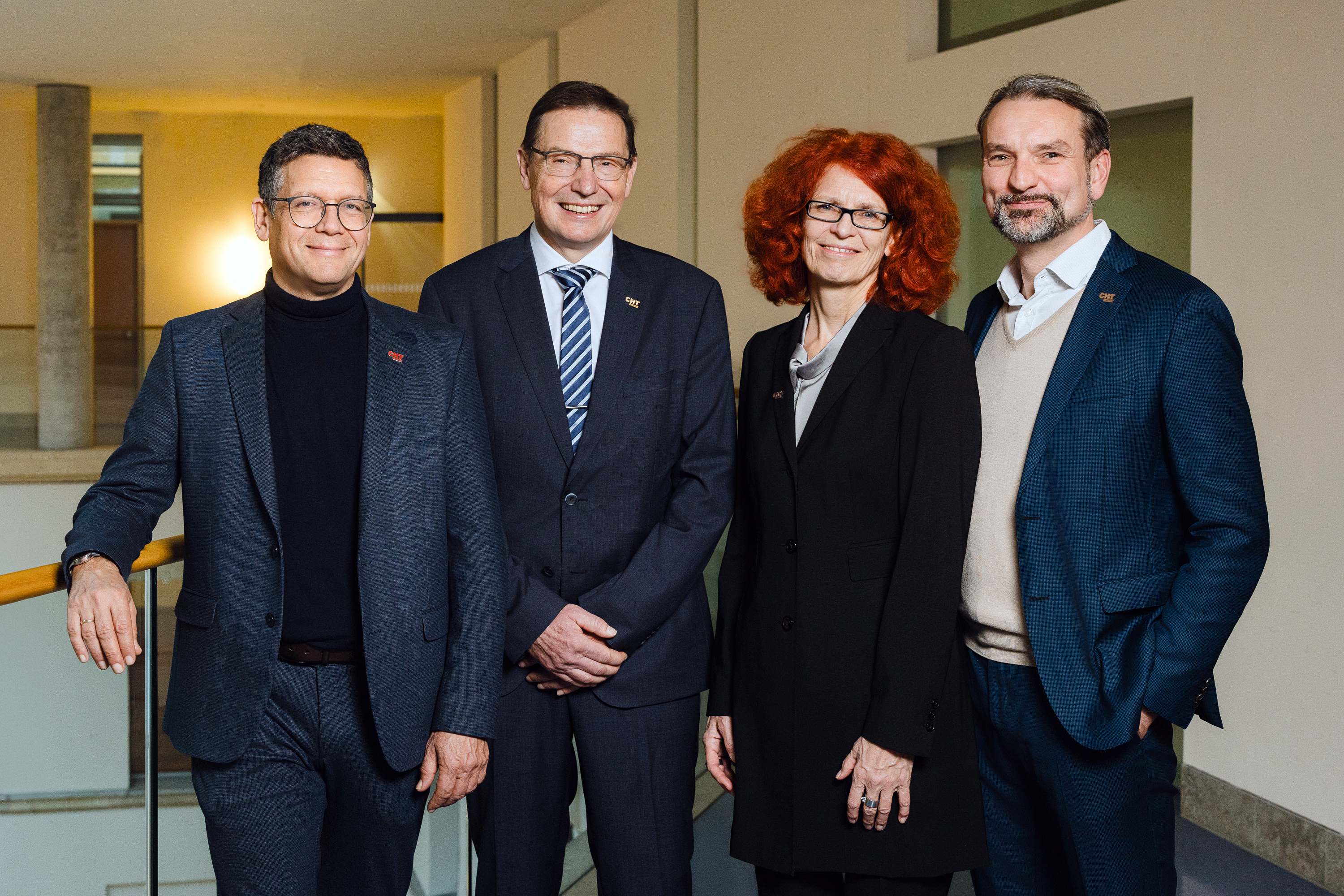»With its innovative ‘PIGMENTURA’ dyeing process, CHT Germany GmbH has developed a new process design that makes a relevant contribution to reducing the environmental impact of textile dyeing. The savings in energy and water consumption are remarkable and the process meets demanding standards for the use of chemicals.«
Dr. Bettina Rechenberg

Dr. Michael Hees (Head of Application Field Printing), Eric Knehr (Global Head of Brand- & Retailmanagement), Dr. Annegret Vester (Chief Sustainability Officer), Dietmar Hipp (Regional Brand & Retail Manager – Europe)
Three questions for Dr. Annegret Vester, Chief Sustainability Officer
How did the idea for "PIGMENTURA" come about?
We place great emphasis on the development of chemicals and processes that help make textile production more sustainable. Our chemists have always worked alongside colleagues in application technology as well as customers to make the energy and water-intensive dyeing processes more sustainable.
PIGMENTURA is an example of how it is possible to develop entirely new processes by rethinking what is already in place. Our starting point was traditional pigment dyeing, which necessitates special components to bind the pigments to the textile. PIGMENTURA pursues the idea of adsorbing pigments to the surface, thereby simplifying the process.
What was your personal highlight in the development process for "PIGMENTURA"? Was there a low point?
Development began with the objective of simplifying “classic” pigment dyeing. A high point was when it became apparent to us that PIGMENTURA offers major potential for savings and that it can replace reactive dyeing for many products, thereby doing away with the associated high water and energy requirements.
Each individual process step had to be developed to process maturity and there were numerous obstacles to overcome. Moreover, the diversity of textiles means that there is a significant range of dyeing behaviour, which we can now reproduce using a single process.
Where do you see your project in the next five years?
It is now used worldwide in industrial production, at least in the fashion sector, which makes rivers cleaner because less water consumption also means less wastewater, taking us on the path towards active climate protection in the global textile industry.
